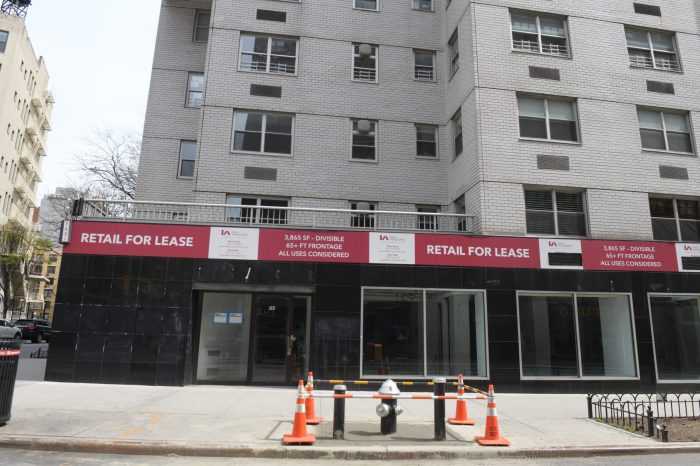
Tech can wreck your body.
While cell phones may allow us to shop, chat, game and gossip with greater ease than ever before, constant use can trigger an array of troubling musculoskeletal troubles. Medical professionals say that “text claw” “selfie syndrome,” and “text neck,” have joined “Blackberry thumb” as repetitive strain injuries caused from peopl repeatedly useof devices that tether us to the virtual world.
“Twenty five percent of my practice is tech-related,” said Leslie Diamond, the director of hand therapy at ShiftPT in Union Square. Patients who experience pain every time they crook their hand in a “claw like position” to take a selfie, or pose their hands over a screen or keyboard to text “are not from one specific population. But if you have a pre-existing condition such as arthritis, or a fracture, you’re more likely,” to suffer a techrelated stress injury, Diamond said.
De Quervain’s tendonitis — a painful inflammation of the tendons on the thumb side of the wrist — and “trigger finger,” — an inflammation of the flexor tendons of the fingers or thumb that can cause the digit to lock and pop — are two of the most common injuries Diamond sees in the digitally obsessed.
While cell phones have long been villains in public health efforts to reduce injuries and fatalities caused by distracted driving, they are also implicated in an array of less obvious ills: The Journal of Hospital Medicine published a study in March showing that smartphones used by health care workers were even more likely to be transmit “pathogenic bacteria” from patient to patient than regular mobile phones. Broken bones and fatalities result from distracted pedestrians tumbling off curbs, wandering into the path of trucks and cars, and irritating other, alert pedestrians to the point of getting punched in the nose. (A 2012 Pew Research Center study showed that 53% of all adult cell users were on the giving or receiving end of a “distracted walking” encounter.) And any cop can tell you that flaunting your new, snazzy iPhone 5 in public is more likely to make you a target for predators.
That’s a tough order, given that one 2013 analysis by tech consultant Tomi Ahonen showed that the average user consults his or her mobile phone 150 times a day.
The twinges of overtaxed tendons and miffed muscles are not captured in data, but hand therapists say they are plenty common – and can be serious.
Bensonhurst’s Simone Stemper, 26, acquired a repetitive strain injury from her laptop and smartphone (“I was using my smart phone all the time for translation”) that was aggravated by an injury. Soon, she found it impossible to open jars, give a massage, or use her laptop. She needed help with note taking in her NYU classes. The condition, she said, has proven both expensive (hand therapy three times a week) and isolating. “Among my friends, I’m the Lone Ranger,” because she can’t engage in friendly texting, she said. And the conditionis frustrating and embarrassing: “It takes up a lot of time, and I have to ask people to help me with everything. I thought about getting an iPad, but they’re hard for me to hold,” because it hurts too much to do so, she said.
Kathleen, a Clinton Hill lawyer, said her “stabbing pain that shoots down your arms into your fingers gets much worse if I spend all day texting,” so the 26-year-old refrains from communicating in the quick, surgy bursts so popular in the “i” generation. “I call on the phone a lot more than other people,” she said. “I don’t use gmail chat, which is the way most of my friends communicate. Chat platforms may seem frivolous, but they do maintain social connections,” which she misses during long days in a law office.
Mindful that law firms may see her disability as a liability, she asked that her last name not be used.”People get all kinds of tendonitis,” from obsessive use of their cellphones and other devices, said Dr. Judith Glaser, a physiatrist who heads Restorative Medicine in New Hyde Park. Holding the hands and fingers at an unnatural angle for long periods of time can both cause and aggravate the condition, she said.
People hunched over iPads for long periods of time “have gotten spontaneous disc herniation in their necks. It can be very painful,” she said.
Patients with tech-caused physical problems often need complete rest (i.e. a moratorium on all cell phone, computer or iPad use) before being put on a physical therapy regimen of gentle strengthening exercises, and sometimes requireinjections of cortisone or sarapin, she said. Braces may be prescribed to help sufferers keep hands in less stressful positions.and some patients with intractable problems eventually opt for surgery.
The great irony is that the devices designed to improve the quality of our lives can wind up destroying it – and causing pain so great that using the device is unthinkable.
Part of learning how to use cell phones responsibly is learning how to have a balanced life that includes time when one is not tethered to the digital leash, but, as Glaser noted, however motivated patients may be to recover, “no one wants to give up their devices.”

















